July 17, 2023
Retail Marketing Insights and Consumer Shopping Behavior Trends for 2023-2024
By Liza Colburn
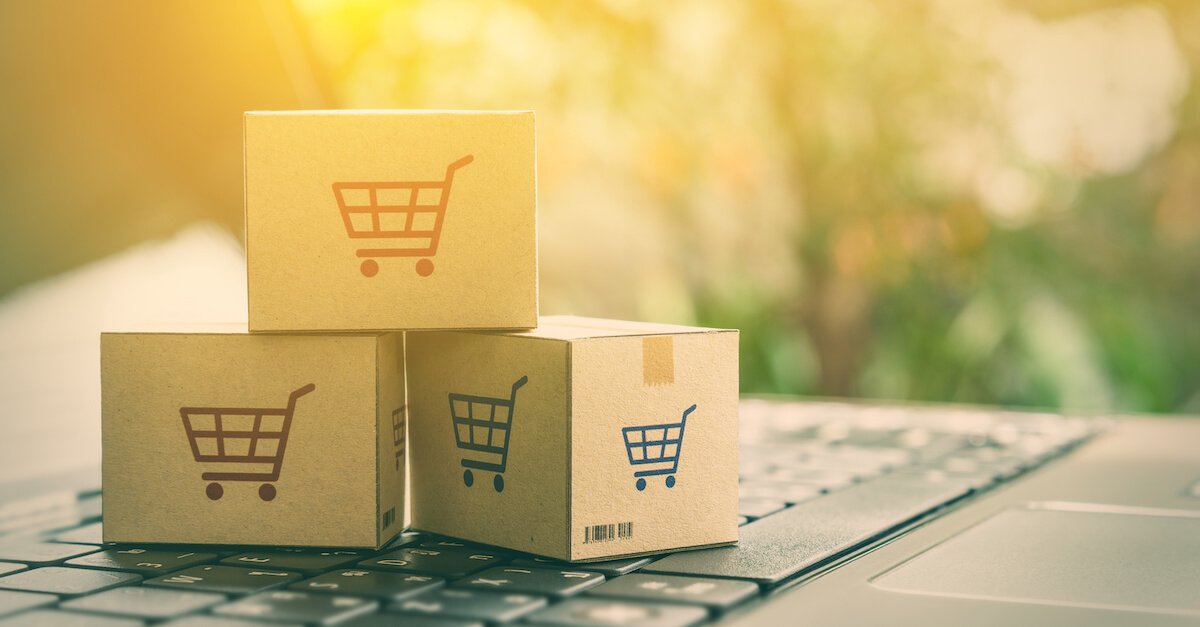
Few industries have been more affected by the rapid changes in consumer shopping behavior trends and infrastructure over the last decade than retail. From the rise of e-commerce and massive supply chain disruptions, to the instant popularity of the direct-to-consumer model and social media shopping, retailers are in an era of disruption and innovation.
All signs point to … confusion. According to McKinsey, while consumer confidence is on the rise, retail spending in 2023 is decreasing. The National Retail Federation (NRF), on the other hand, forecasts that retail sales during 2023 will grow between 4% and 6% above 2022 levels. In terms of consumer shopping trends, malls are on the decline, but the most tech savvy generation, Gen Z, still likes shopping in stores.
What do all of these contradictions mean for retailers? In order to better understand where retail is going, we examined some of the latest retail trends in consumer shopping behavior.
8 consumer shopping behavior trends
In order to appeal to today’s evolving consumer shopping behavior trends and expectations, retailers must change their offerings, marketing strategies, and structure. Today, retail includes both in-store shopping and e-commerce. This presents new opportunities for retailers to reach new and current customers across channels and geographies; addressing today’s consumer shopping trends in retail requires new strategies and increased scale.
1. Omnishopping
The omnishopper is here to stay. These consumers purchase and interact with brands across online and offline channels. The omnishopper doesn’t stick to one or two channels either; they love to channel jump and connect with their favorite brands wherever they happen to be. For example, if they’re currently browsing Instagram, they expect to be able to shop their favorite styles and get their customer service questions answered without leaving the social platform.
In response to this, 81% of retailers are planning to expand the number of digital channels they sell on in the next 12 months. Social media and mobile commerce are two of the biggest areas to which retailers are expanding.
It isn’t just about expanding channels, however. According to NRF, the modern omnichannel retail experience is a fully integrated shopping experience. Consumers want to have the same branded experience in-store that they enjoy online and across social media. Forward-thinking retailers invest in strategies that improve the shopping experience no matter where consumers interact with the brand.
Many top retail brands look to chatbots or other customer service outsourcing strategies in order to expand coverage and meet customers where they are and when they want. Today’s consumers are seemingly always online and have grown accustomed to instant gratification. While wait time expectations vary by channel, many customers expect to hear back ASAP.
2. The subscription model
The subscription model has taken hold far beyond media and SaaS companies. In certain verticals–like beauty, wellness, and pets–which have products that need to be replenished regularly, consumers and retailers alike benefit from paying for a subscription. The model allows retailers to build stronger customer relationships and give customers added convenience, and often added savings, by signing up to receive their product in regular intervals.
The subscription economy is relatively new, but it’s growing quickly. According to a 2022 survey by Ordergroove, 52% of respondents have between two to five products delivered via subscription.
3. Personalized digital shopping experiences
Over 70% of consumers expect personalization and 76% of consumers get frustrated when they don’t find it. Personalization is one of the biggest consumer shopping behavior trends. What counts as personalized digital experiences? How can retailers deliver them at scale? Adding the customer’s name to an email or to the website isn’t personalization. Neither is sending the customer a coupon or message on their birthday. While these actions are well intentioned, they don’t necessarily add value to the customer or to their shopping experience. Nor do they differentiate the brand.
Let’s explore some digital personalization strategies that will differentiate your brand and add value to customers.
Insightful product recommendations
When customers purchase products in-store, sales associates ask them questions about what they are looking for and make personalized product recommendations. E-commerce brands that offer quizzes to give online customers insightful product recommendations not only drive more sales, but also build personal relationships with customers. The Andie Fit Finder for swimwear, Prose Hair Consultation, and BedGear’s PillowID Quiz are great examples of this strategy.
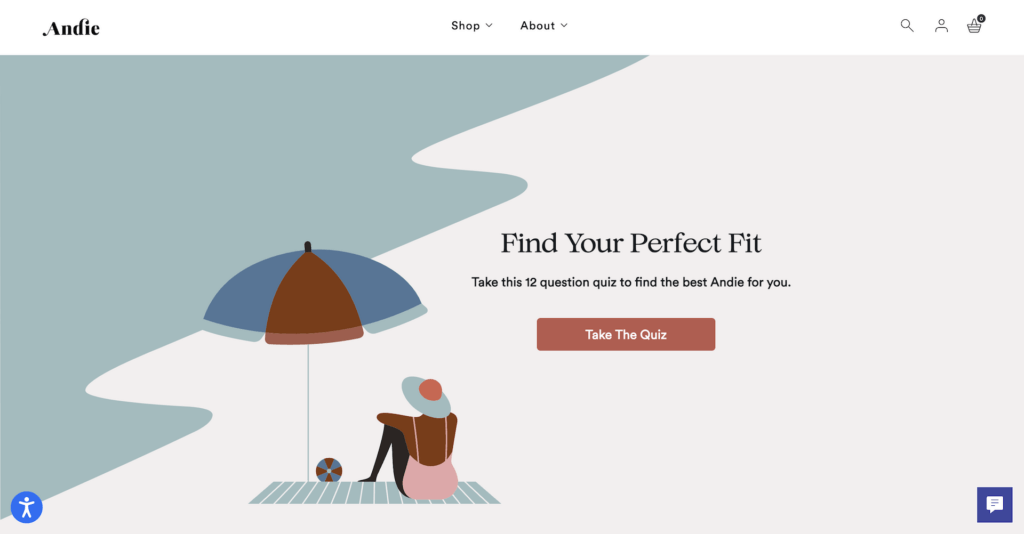
While product recommendation quizzes can be a useful tool, they may not fit every brand. Brands can still make personalized product recommendations based on customer preferences, browsing history, purchase history, etc. Many brands are experimenting with personalized homepages featuring relevant products based on their browsing history. This leads to more insightful product recommendations as opposed to using generalized data such as age, geography, gender, etc.
Personalized digital messaging
Digital marketing messaging should “speak” to each customer as if the brand knows them personally. Generative AI, and specifically Persado Motivation AI, allows some of the world’s biggest retailers to deliver AI-generated language that motivates each customer to engage and act across every digital channel and stage of the customer journey.
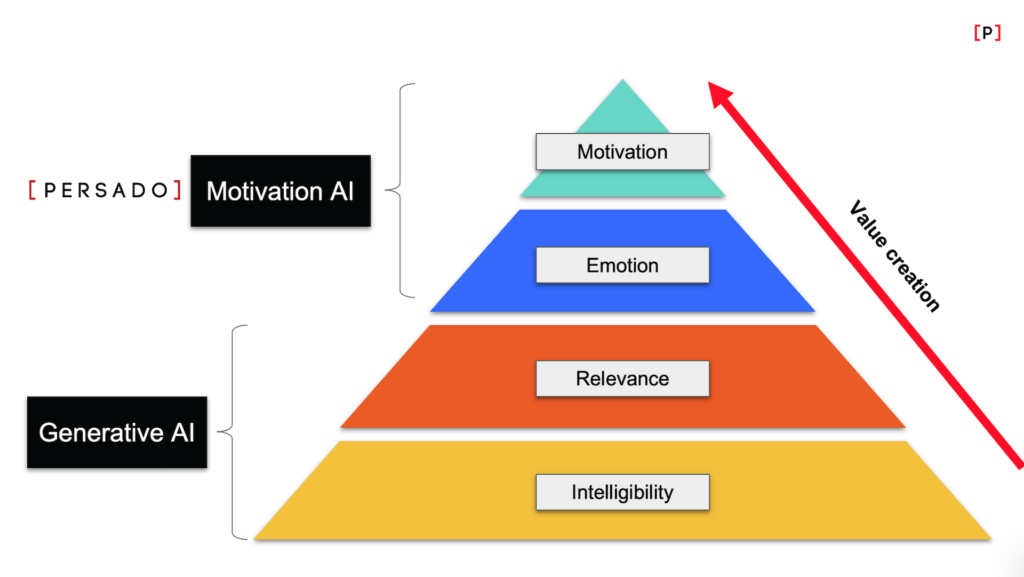
Top retailers like Kate Spade, Coach, Marks & Spencer, and Gap leverage Persado’s proprietary language model, made up of over 1.5 billion customer interactions from 150 million US customers, to create the highest-performing digital marketing language for every channel and audience.
Dynamic messaging in the online cart
Forward-thinking retailers invest a lot in personalizing the digital shopping experience. However, they often forget about the online cart—the most significant step in the online customer journey. With Persado Dynamic Motivation, enterprise retailers can use their session data and Persado Motivation AI to personalize messaging in the online cart. While one customer may see “Your cart is ready,” another will see “Great choices!”
Brands that use Dynamic Motivation in the online cart see a 3-5% increase in e-commerce revenue. With online cart abandonment rates at over 70% on average, anything retail and e-commerce leaders can do to reduce cart abandonment rates will have an incredibly positive impact on revenue and on the brand.
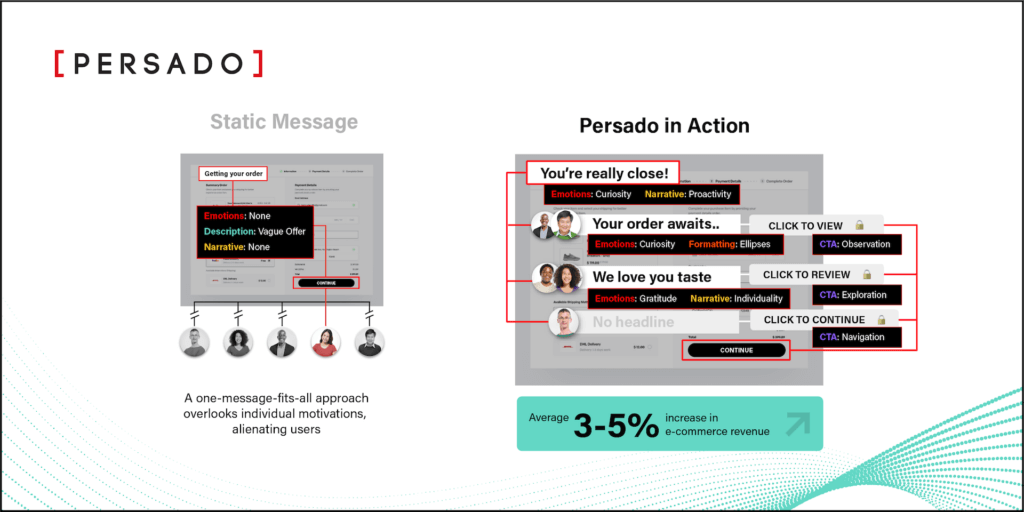
The origin of all personalized digital shopping experiences is identifying what is important to the customer. Once a brand has gained insight into what customers actually want, the organization should then make sure they have the right data and technology to deliver on it. No large scale personalization strategy is ever complete. Retail leaders continue to get feedback from customers and to optimize their personalization strategy.
4. Self-service returns
Today’s customers have grown accustomed to the instant gratification they get from tech giants such as Netflix and Amazon Prime. They’ve also grown to expect the intuitive user experience of the iPhone. As e-commerce sales grow, so does the volume of returns. This adds up to $761 billion in merchandise that will end up back in retailers’ warehouses. Simple and easy to understand self-service returns benefit both retailers and customers.
This interactive digital experience allows customers to select items to return or exchange, share why and how they want to return them, and finally print shipping labels or receive QR codes to complete the return or exchange. This simple and effective process gives customers confidence in their purchases and elevates the customer experience along with customer loyalty. It also results in more seamless warehouse operations, and improved data collection and inventory management.
Note that quick and easy does not always have to include free. While many retailers once lured customers in with free returns, sometimes even including prepaid return labels in the order, many of these policies aren’t sustainable in the long term for retailers. Despite many returns no longer being free, the policies should still be easy to understand and implement. For example, customers can print out a prepaid shipping label for $7-$10 off their return refund and mail the item(s) back. Or customers receive a QR code and bring their return to a nearby store that is authorized to receive the brand’s returns (i.e. Amazon returns at Kohl’s).
5. TikTok trends
TikTok trends are golden for retail sales. 23% of US users say they use the platform for discovering new products to purchase. TikTok is converting shoppers at a rapid speed. TikTok’s retail purchasing path has been described as an infinite loop vs. a linear purchase journey.
One of the greatest examples of a viral TikTok trend generating business results for retailers is #BamaRush. Year after year sorority rush at the University of Alabama has gone viral on TikTok with thousands of participants sharing their outfits and experiences. Fast fashion brands such as Shein, Amazon, Princess Polly, and Lulu’s saw an uptick in traffic and followers thanks to the popular hashtag. Southern jewelry brand Kendra Scott saw a 5% increase in conversion rates that translated into a revenue increase of almost 20%, a 17% increase in new online customers compared to the week prior, and a 600% increase in searches all thanks to #BamaRush on TikTok. Local family owned boutique, The Pants Store, even gained national fame as a result of this TikTok trend.
6. Positive digital marketing messaging
The Persado Content Intelligence team has found time and time again that digital marketing messaging in retail that plays on a sense of Urgency (one of the emotions the Persado Motivation AI is tagged to identify) doesn’t perform well with today’s customers. Customers don’t respond well to fleeting deals or the fear of missing out, as communicated in subject lines like “last chance.” So, what resonates with customers? Digital marketing messaging that appeals to their sense of Curiosity along with friendlier emotions such as Fascination and Exclusivity. Digital marketing language such as “you’ve scored” or “we’re offering” perform better across retail.
According to our 2023 Customer Motivation Report, digital narratives around Timelessness (i.e. “Welcome to your new forever piece”) performed best in fashion and retail as consumers look to invest in classic investment pieces rather than chase the latest deal. Read the full report here.
7. Celebrity-created brands
Social media has become saturated. So it can be hard to grow a brand following or build a social media following from scratch. Super creators or celebrities who already have millions of social media followers are at an advantage when it comes to creating and promoting brands. While some still choose to take on brand sponsorships, many are now opting to create their own brands. Popular brands like Skims (Kim Kardashian), Fenty Beauty (Rihanna), and The Honest Company (Jessica Alba) were founded by celebrities who already had large followings.
Celebrity and creator-backed brands are able to tap into established audiences. Today, many marketers struggle to reach consumers with targeted ads as third-party cookies are phased out and privacy settings (i.e. Apple’s iOS app tracking permission requirement) became more stringent.
8. Cheaper alternatives
Another viral trend on TikTok and other social media platforms is #dupe. This refers to a cheaper priced lookalike or duplicate to pricier or sold out items, usually in fashion or home decor (i.e. a Lululemon #dupe). As of July 2023, #Dupe has been viewed over 4 billion times on TikTok alone.
As a result of inflation and economic uncertainty, this consumer shopping trend toward more generic, yet equally stylish, versions of expensive or unavailable items comes as no surprise. According to Google Trends, global search for the term “dupe” has steadily grown over the past two years.
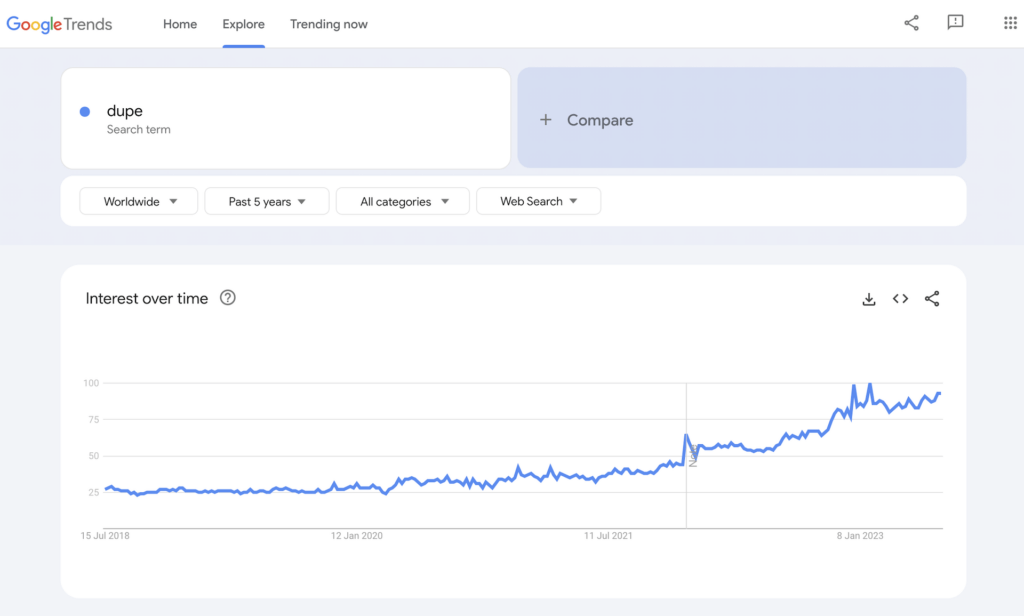
In addition to buying dupes to save money, more consumers are also buying items secondhand. At the grocery store, more shoppers than ever are purchasing store brands. In 2022, sales of private label grocery store brands hit a record high growing at nearly twice the rate of national brands.
As technology and society continues to evolve, so do the expectations and purchasing habits of the retail customer. Retailers who use AI technology to stay ahead of consumer behavior trends and adapt will gain market share despite challenges and changes ahead.
To learn how Persado Motivation AI can help your brand increase conversions and create deeper connections with customers by using personalized and positive digital messaging, request a demo.


